How To Authenticate Prada Clothing
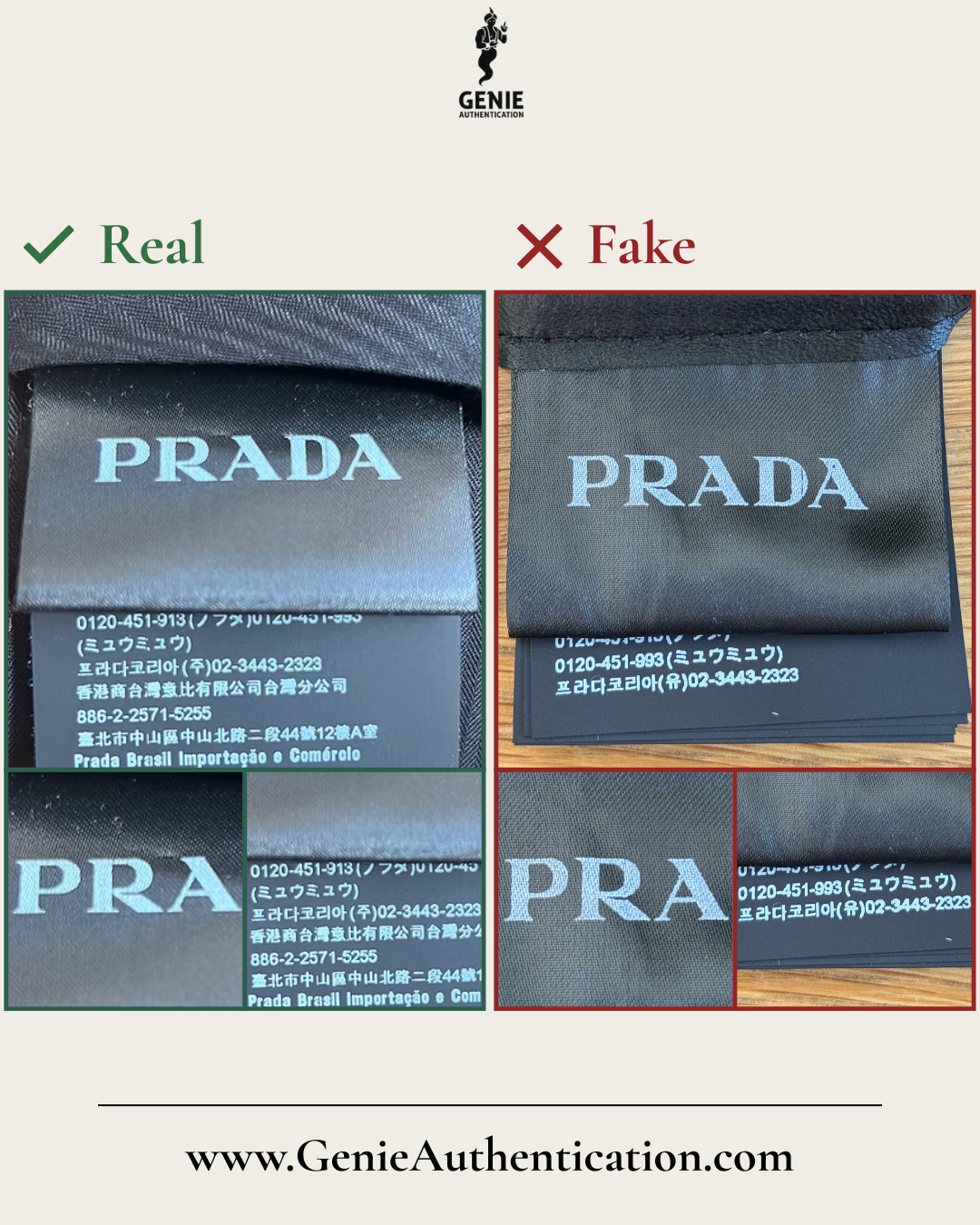
Wash Label
In this example, the counterfeit label incorrect prints the 'PRADA' text, most noticeably in the shape of the lower portions of letters 'P', 'R' and 'A'.
The counterfeit fails to accurately replicate the appearance of the printed text, which looks overly thick. In contrast, authentic labels feature sharper, more refined printing.
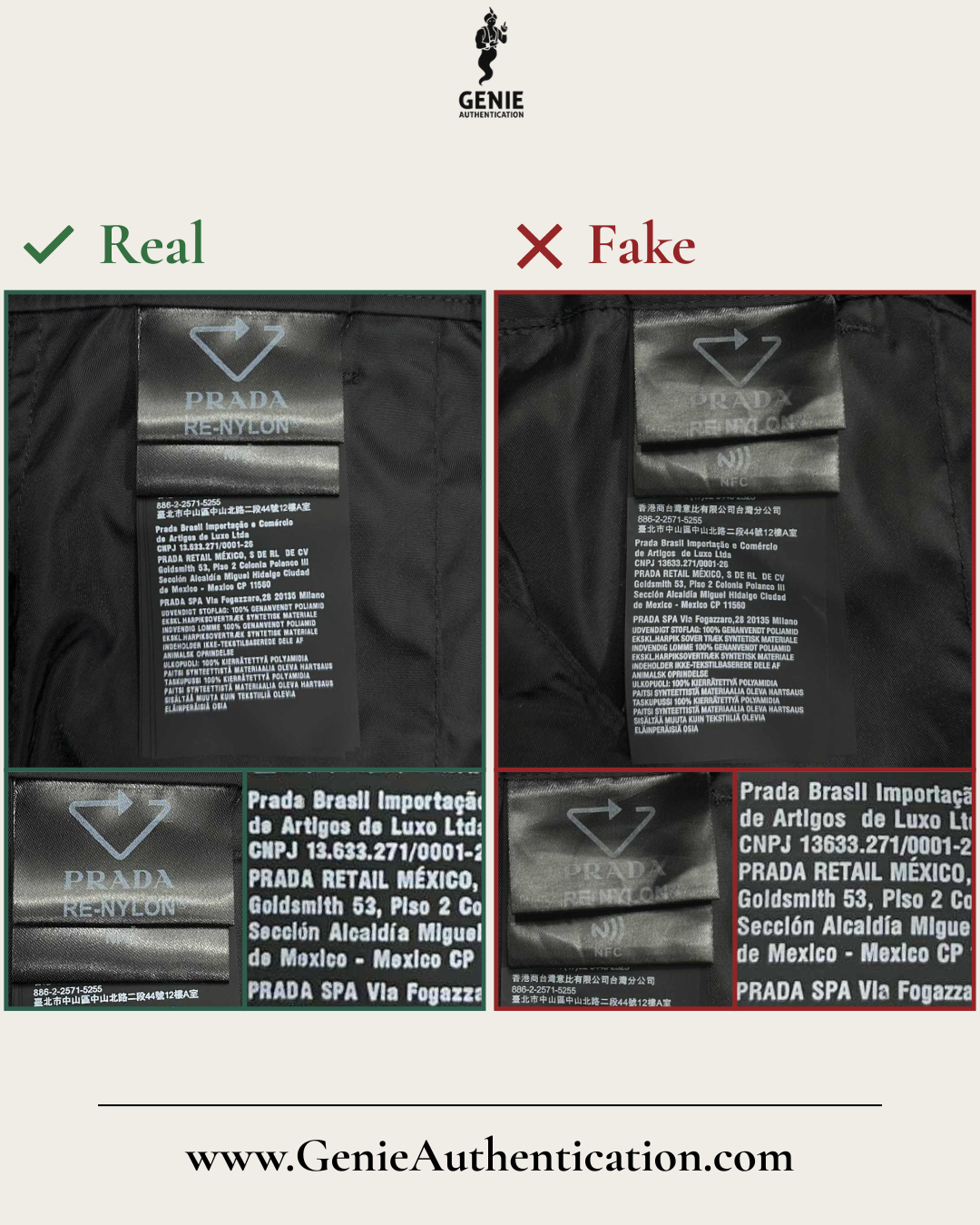
Wash Label
In this example, the counterfeit label incorrectly reproduces the Re-Nylon and NFC markings in both print quality and proportions. The NFC text appears too thin, while the logo displays insufficient spacing between the Prada wordmark beneath.
The counterfeit also fails to accurately replicate the font, resulting in distorted letterforms throughout.
The counterfeit's print also lacks the authentic textured appearance, instead looking overly flat and new.
The counterfeit label possesses some key errors, such as the absence of the dot in ‘13.633’ or the accent on the 'E' in MEXICO' floating above the letter.
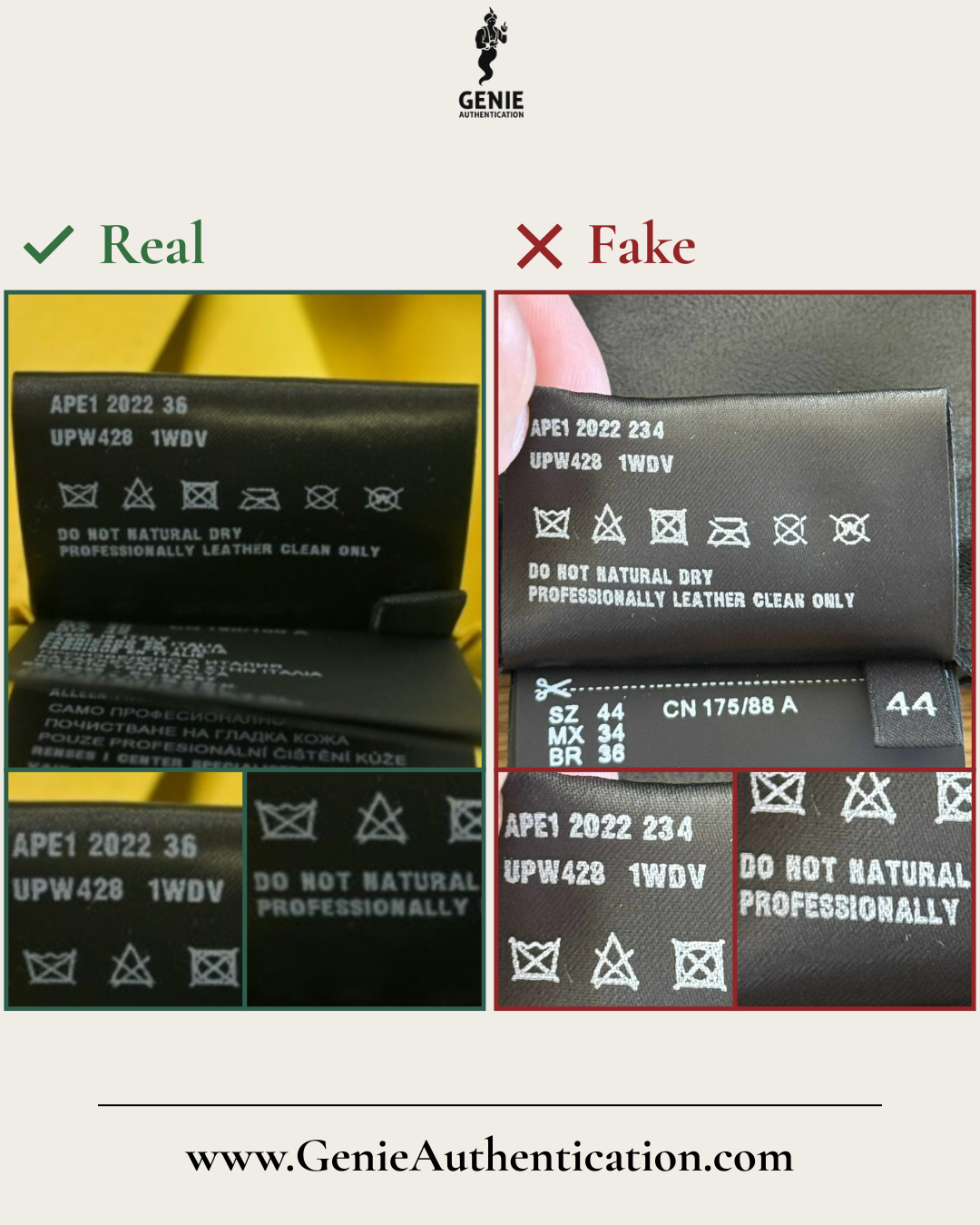
Wash Label (Continued)
In this example, the counterfeit fails to accurately replicate the appearance of the printed text, which looks overly thick. In contrast, authentic labels feature sharper, more refined printing.
This increased thickness also impacts the spacing, making some letters appear less clear and causing them to sit much closer together than on an authentic label.
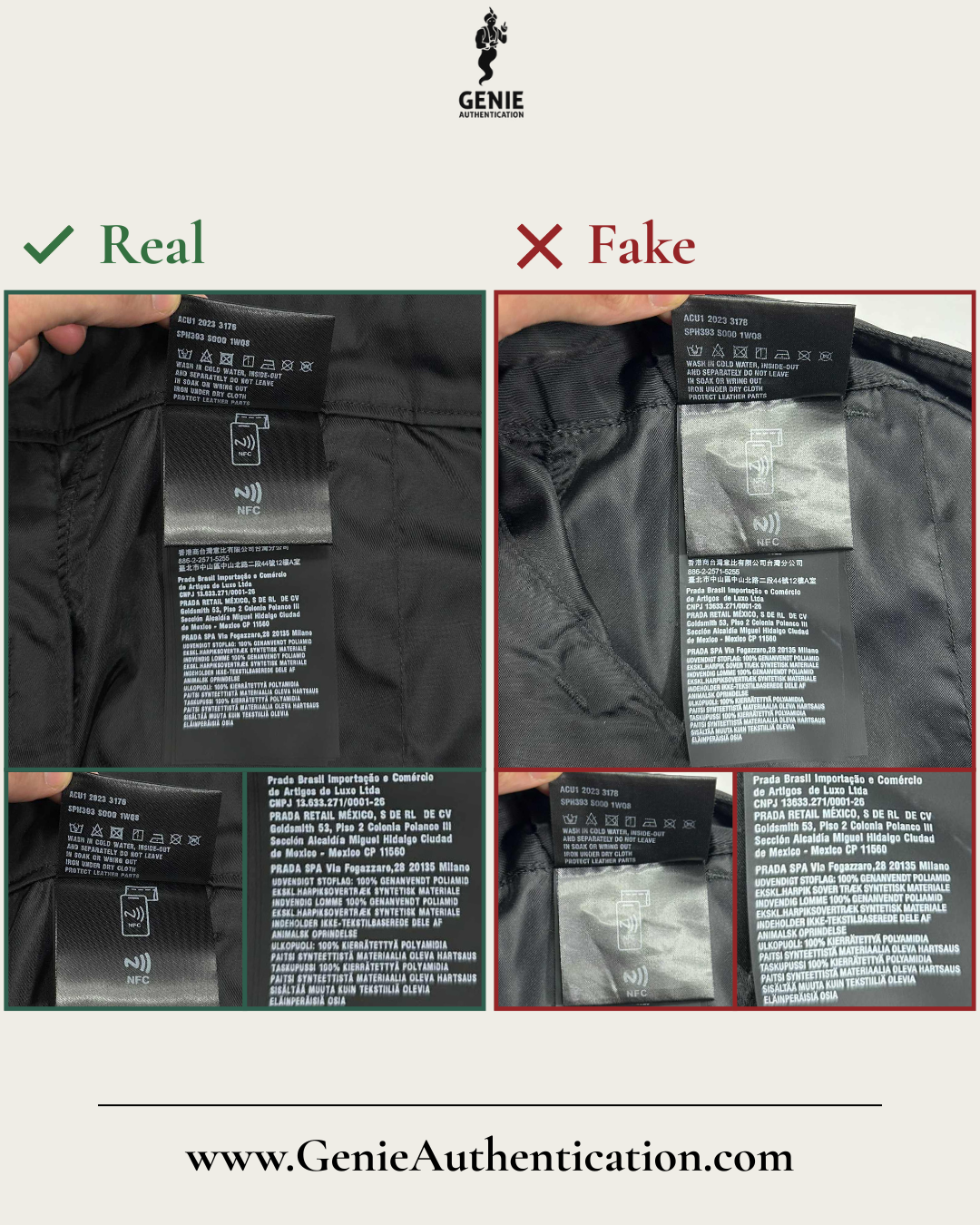
Wash Label (Continued)
In this example, the counterfeit label incorrectly reproduces the back of the Re-Nylon tag in both print quality and proportions. The text appears too large, while the wash symbols, NFC symbol and text are rendered too thin.
The counterfeit also fails to accurately replicate the font, resulting in distorted letterforms throughout. Several spacing elements are incorrectly executed, including inconsistent gaps between letters and words, and excessive spacing between ‘Artigos’ and ‘de’.
The counterfeit's print lacks the authentic textured finish, appearing overly flat and new, and it also omits key details, such as the dot in ‘13.633’.
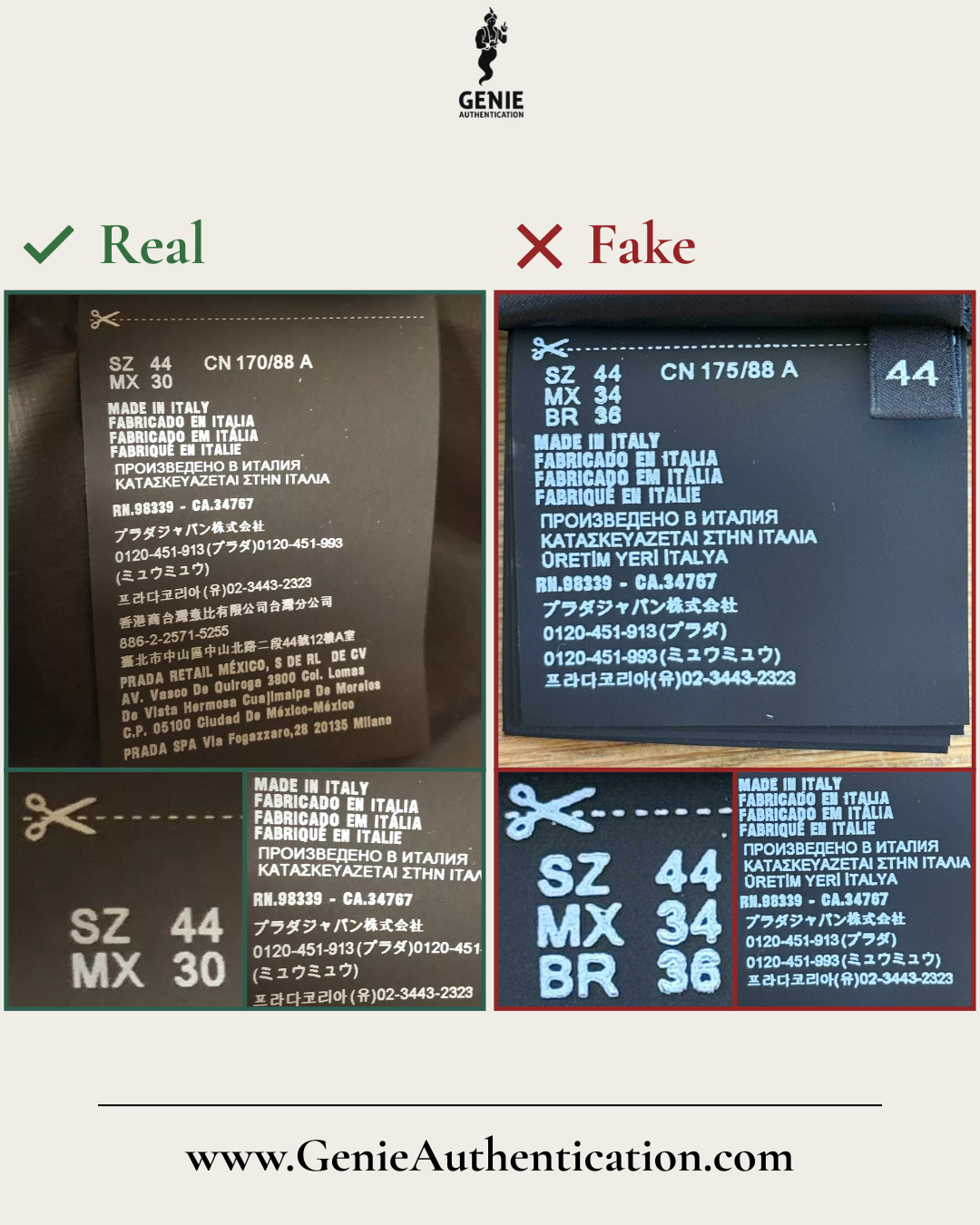
Wash Label (Continued)
In this example, the counterfeit fails to accurately replicate the texture and appearance of the printed text, which looks overly thick and has an unnatural, gel-like, three-dimensional quality. In contrast, authentic labels feature sharper, more refined printing.
The counterfeit incorrectly lists the product size. Prada’s European size 44 (EU 44) corresponds to a Mexican size 30 (MX 30) and a Brazilian size 42 (BR 42), highlighting yet another inaccuracy.
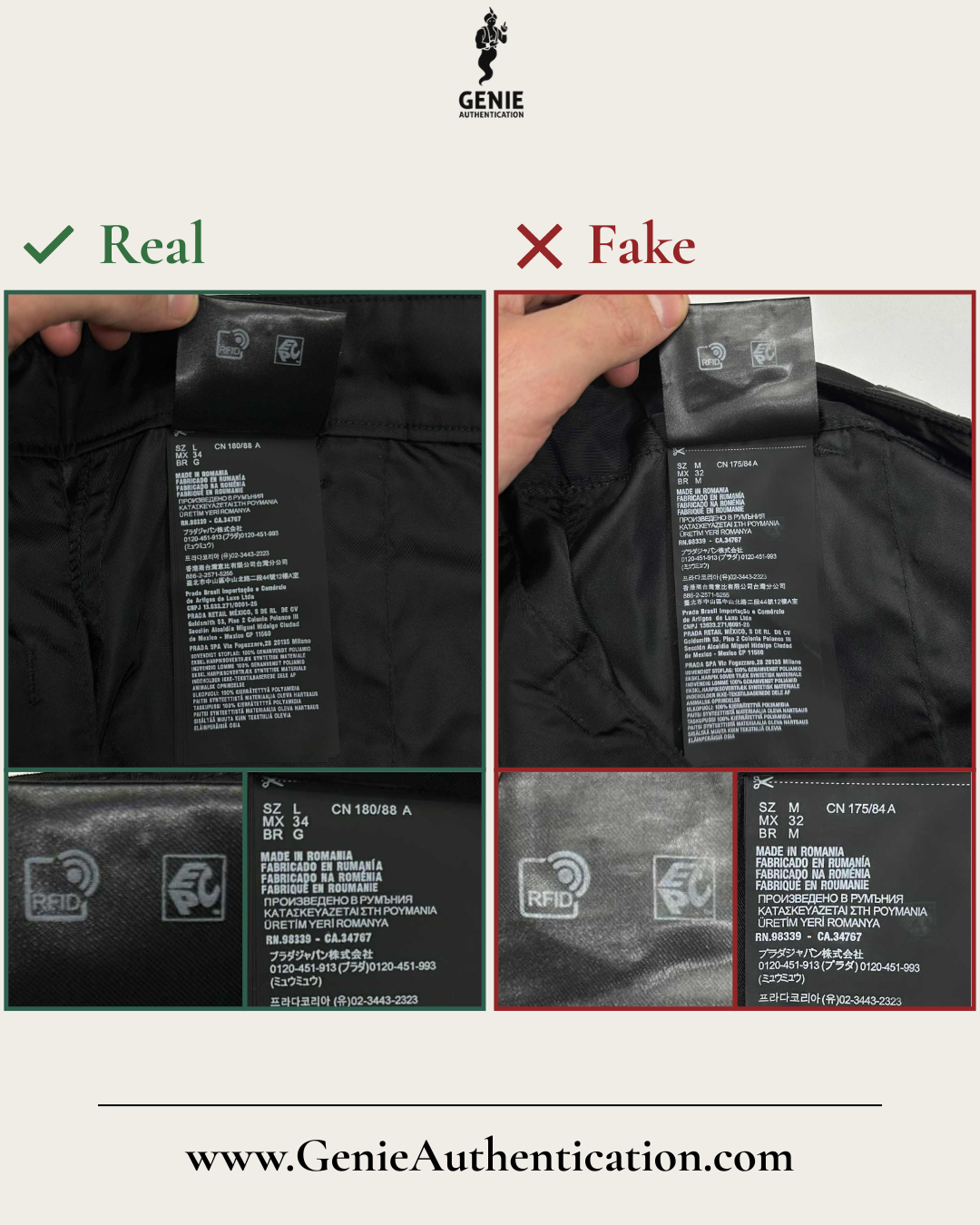
Wash Label (Continued)
In this example, the counterfeit label incorrectly reproduces the RFID and EPC symbols, with the RFID text positioned too far to the right and the radio frequency icon rendered too thick.
The counterfeit also fails to accurately replicate the font, resulting in distorted letterforms throughout.
The counterfeit displays excessive spacing between the katakana characters ‘プラダ’, disrupting the intended alignment visible on the authentic label.
The counterfeit's print itself lacks the authentic textured finish, appearing overly flat and new, and the label further omits key details such as the dot in ‘13.633’.
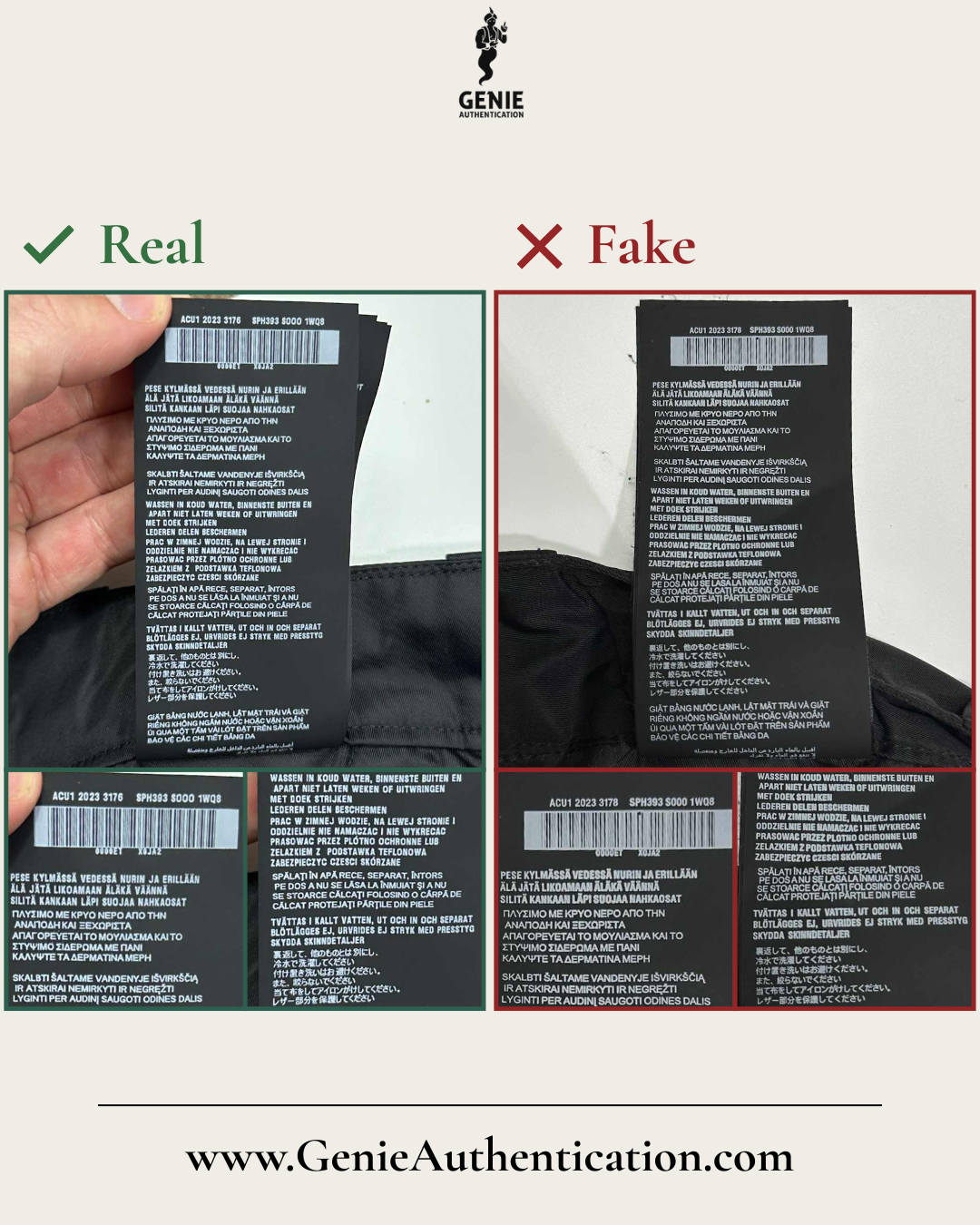
Wash Label (Continued)
In this example, the counterfeit fails to accurately replicate the font, resulting in distorted letterforms throughout.
The counterfeit's barcode appears thicker than it should alongside the style code text appearing too large, with incorrect spacing between letterforms and the top line positioned slightly too close to the barcode beneath.
The counterfeit's print also lacks the authentic textured appearance, instead looking overly flat and new.
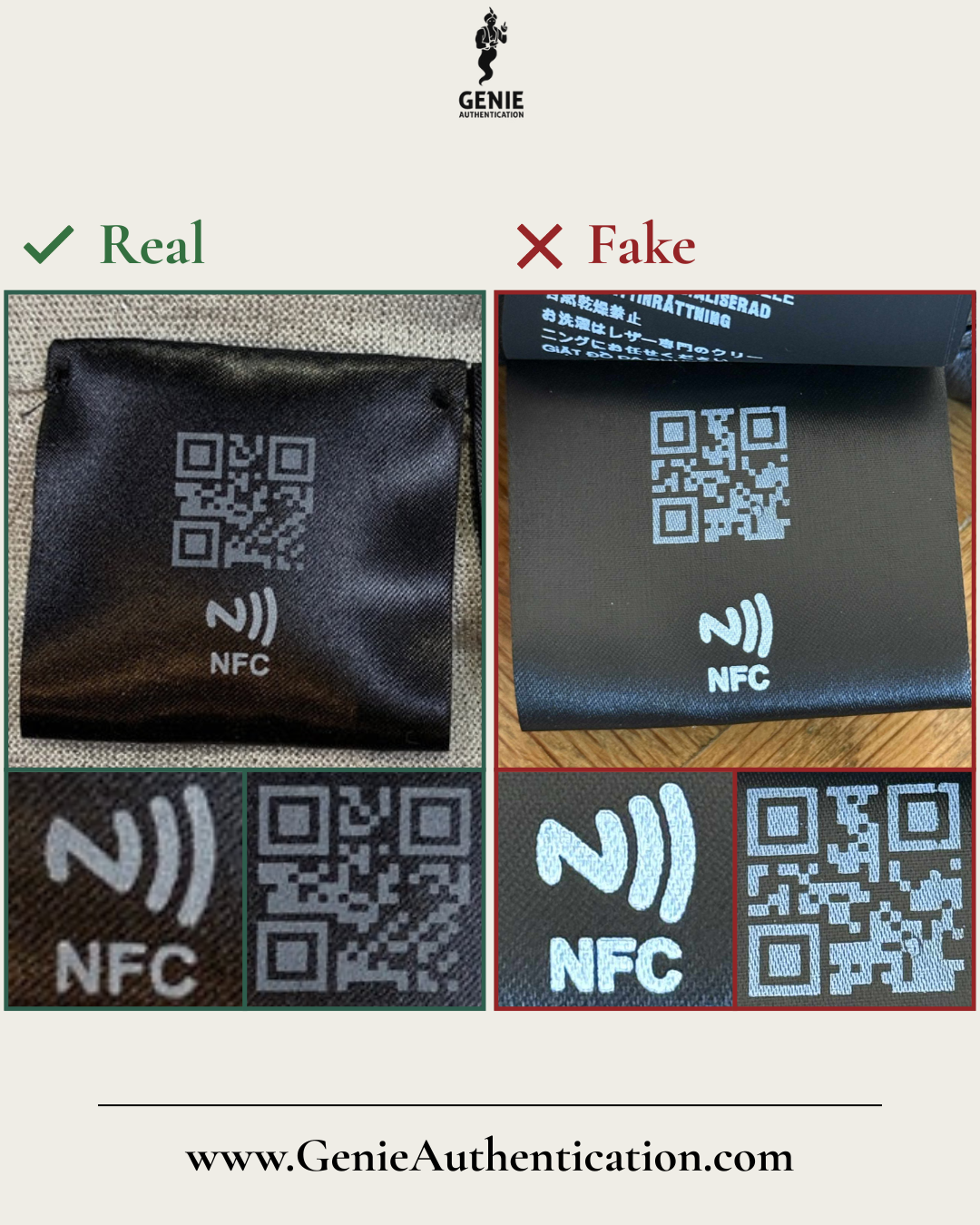
NFC Label
In this example, the counterfeit fails to accurately replicate the printed NFC text and logo, which appear overly thick.
The QR code on the counterfeit label shows clear inconsistencies, while the genuine version features clean, well-defined squares throughout.
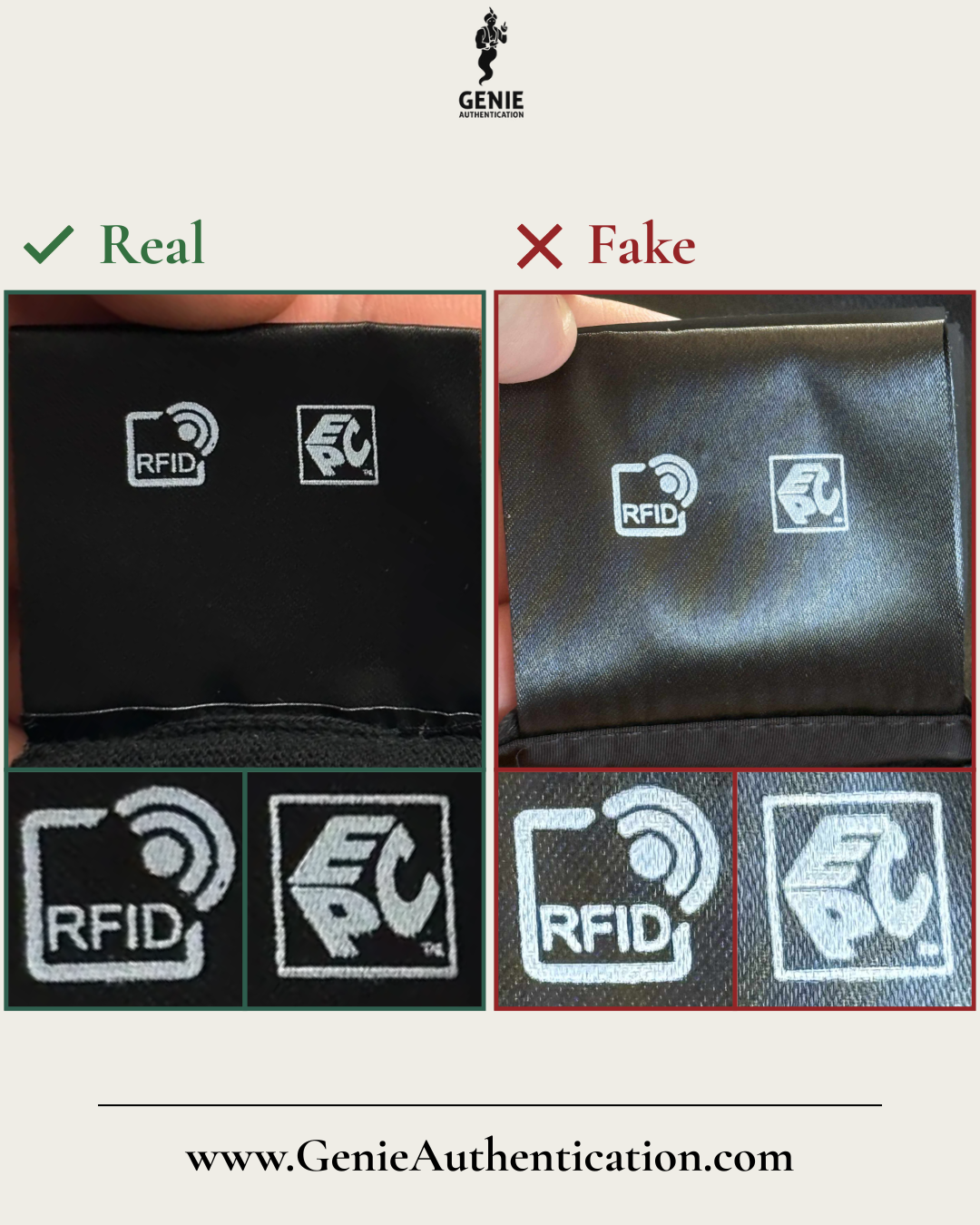
NFC Label (Back)
In this example, the counterfeit fails to accurately replicate both the Radio Frequency Identification and the Electronic Product Code logo, which appear overly thick.
The counterfeit also produces the RFID text too thick.
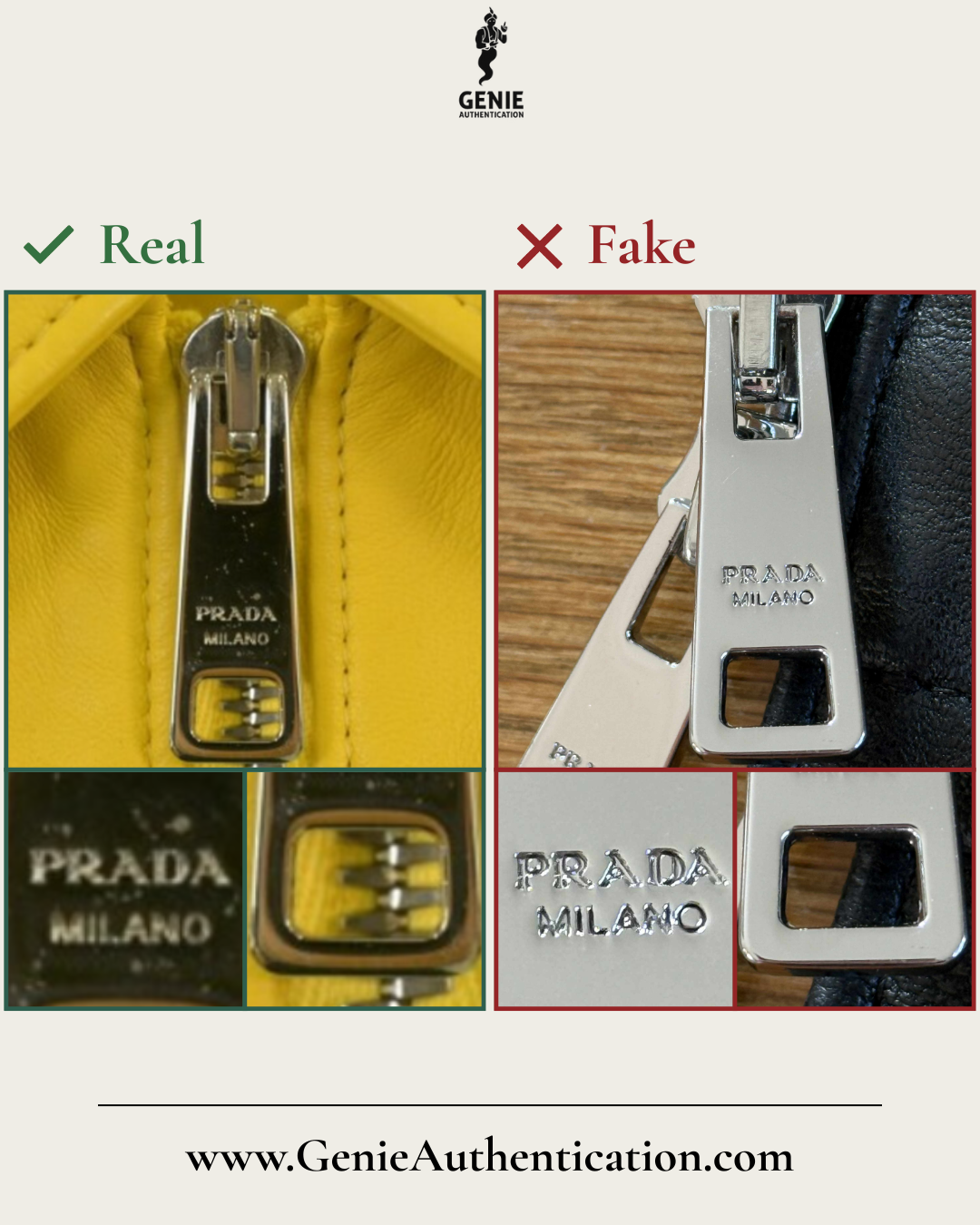
Zip Pull
In this example, the counterfeit’s engraving is noticeably incorrect, too thin and lacking the sharp clear definition and depth found on authentic pieces.
Additionally, the letterforms are undersized and inconsistently produced, with the irregularities most apparent in the ‘A’ and ‘O’ of ‘MILANO’.
The zip pull is also inaccurately shaped, featuring a noticeably shorter top gap and a lower portion that is both thicker and incorrectly contoured.
Note: This guide is not exhaustive. Authentic Prada products can vary by model, season, and country of manufacture, so genuine items may differ from the examples shown. Counterfeit versions are constantly evolving, with new variations regularly appearing that may not be documented here. When in doubt, professional authentication is strongly recommended.
At Genie Authentication, we create free resources to provide valuable, accurate, and accessible information to everyone. Our mission is to empower consumers, promote authenticity in designer fashion, and combat counterfeiting. If you've found our resources helpful or learned something valuable, we kindly ask for your support. Consider purchasing an authentication to help us continue offering high-quality, free educational content. Your contribution ensures that we can keep educating and protecting consumers while fighting counterfeit products. Thank you for supporting our mission!
